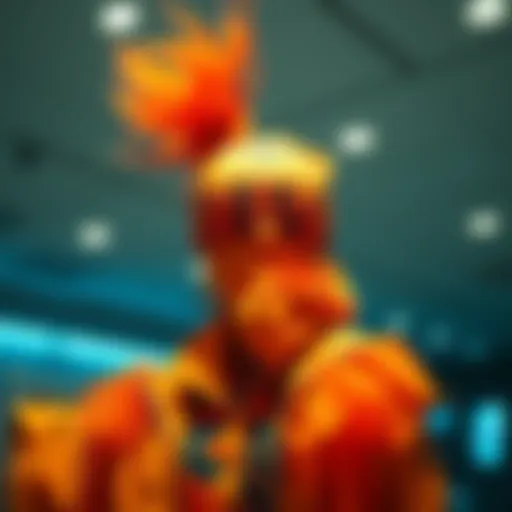The Role of Brick Tablecloths in Modern Fashion
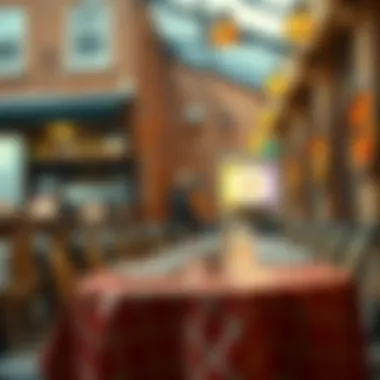

Intro
In recent years, the evolution of fashion has seen fabrics traditionally associated with domestic use, such as brick tablecloths, stepping into the limelight of high-fashion. Once viewed merely as functional household items, these textiles have undergone a transformation, highlighting their versatility and appeal in contemporary wardrobes. This article dives deep into the role brick tablecloths play in today's fashion scene, exploring their history, material significance, and design appeal.
Latest Trends in Clothing
The incorporation of brick tablecloths into fashion trends is no longer an obscure phenomenon but a visible pivot for many designers eager to inject a sense of nostalgia and practicality into modern aesthetics. Colors reminiscent of terracotta and rustic palettes bring warmth to current collections, aligning with seasonal themes and creating ethereal looks.
Seasonal Must-Haves
When discussing must-have items for the season, brick tablecloth-inspired designs take the cake. Incorporating these textiles into outfits can enhance both casual and semi-formal ensembles. Prominent trends you might find include:
- Oversized jackets and trousers: Channeling retro vibes while offering comfort.
- Statement dresses and skirts: Often featuring patterns drawn from the geometric designs of brick tablecloths.
- Textured accessories: Think bags and shoes that mimic the fabric’s texture, adding depth to any look.
Influential Fashion Icons
Fashion icons and influencers have begun to embrace these fabrics, merging everyday practicality with cutting-edge designs. These icons include:
- Bella Hadid: Often spotted in avant-garde interpretations of everyday fabrics.
- Timothée Chalamet: Boldly wearing unconventional materials, setting new standards for men's fashion.
Their choices underscore a broader cultural shift that celebrates the merging of function with style, further legitimizing the place of brick textiles within high fashion.
Practical Dressing Tips
For those looking to integrate brick tablecloth elements into their wardrobes, here are some practical tips to consider:
Wardrobe Essentials
- Layering basics: Consider base layers in neutral colors that facilitate mixing and matching your standout pieces.
- Versatile jumpsuits: Often featuring patterns or textures similar to brick tablecloths, these are perfect for both day and night.
- Tailored blazers: A sharp addition when crafted from brick-inspired materials, adding sophistication to any look.
Style Guides for Different Occasions
Adapting depending on the occasion can determine how brick fabrics express themselves. For example:
- Casual Outings: Pair a brick-patterned shirt with denim for a relaxed yet chic appearance.
- Formal Events: Consider a tailored brick-themed suit or gown, allowing for a new take on formalwear without losing depth.
"Brick tablecloths embody cultural resonance, transforming simple fabric into a powerful statement of fashion's ability to reimagine the everyday into the extraordinary."
Ultimately, as the connection between fashion and textile innovation deepens, brick tablecloths hold immense potential. This exploration not only bridges the gap between personal style and historical significance but also promotes a trend towards sustainable fashion choices. As we dive into the following sections, we will further detail the relevance of these fabrics, their influences on the fashion landscape, and their integral role in shaping modern aesthetics.
For further insights into fabric trends, consider checking resources such as Wikipedia on Historical Textiles or industry discussions on Reddit Fashion Community.
Stay tuned as we dissect the cultural implications and sustainable aspects that come hand-in-hand with the use of brick tablecloths in our contemporary environment.
Preamble to Brick Tablecloths
Exploring the world of brick tablecloths is not just about aesthetics; it’s a deep dive into their significance in both everyday life and the fashion industry. These textiles hold a historical weight and are far more than simple coverings for tables. As we navigate through this article, we will uncover various elements that make brick tablecloths a standout choice for modern clothing and decor.
Defining Brick Tablecloths
Brick tablecloths take their name from the distinctive design that resembles the texture and color of traditional brick patterns. They typically feature a repetitive grid structure with alternating colors, often rich reds, browns, and occasionally vibrant greens or blues. This visual dynamism offers a rustic charm, bridging the gap between contemporary designs and nostalgic elements of home decor. In fashion, the adaptability of this pattern aligns remarkably well with various styles, from casual wear to high-fashion edits. The fabric composition can vary — ranging from cotton blends to synthetic materials — making them not only stylish but functional across multiple applications.
Historical Overview
To appreciate the brick tablecloth's impact, it's essential to look back. These textiles have origins that date back centuries, primarily emerging from the rural settings where functional textiles were a necessity. Historically, tablecloths served practical purposes, protecting surfaces while also showcasing the craft of local weavers.
In the early 20th century, as home decor began to embrace aesthetics more vigorously, designs started working their way into restaurants and cafes. The brick pattern found favor in bistros, symbolizing warmth and welcoming ambiance. It wasn’t long before fashion enthusiasts latched onto the charm of this design. Over decades, fashion designers began integrating brick motifs into their collections, blending the boundaries between home textiles and wearable art.
Today, brick tablecloths resonate with cultural symbolism, reflecting the notion of groundedness and tradition while adapting to modern tastes. The journey of this design is a testament to its resilience and versatility — qualities that continue to inspire both fashion lovers and industry professionals alike.
"The fabric of our lives is not just woven; it tells stories of our journey."
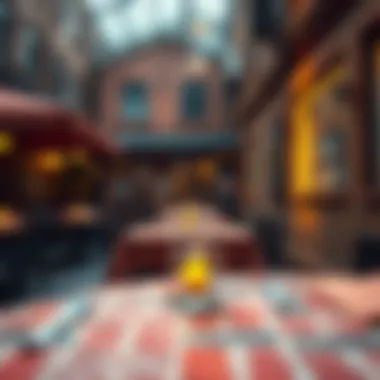

In this article, we’re set to delve deeper into the material composition, stylistic versatility, and cultural significance of brick tablecloths, providing a well-rounded perspective for anyone invested in modern fashion.
Material Composition of Brick Tablecloths
Understanding the material composition of brick tablecloths is key to appreciating their role in contemporary fashion. The fabric choices not only influence the aesthetic quality but also the durability, functionality, and sustainability of the tablecloths. As we explore different types of fabrics and their sustainability considerations, it becomes clear how these aspects intertwine with trends in fashion, allowing brick tablecloths to remain relevant and appealing.
Types of Fabrics Used
Brick tablecloths are crafted from a range of fabrics, each offering unique properties that enhance their usability and visual appeal. Here are some prominent fabric types commonly used:
- Cotton: A classic choice, cotton brings comfort and breathability. Its natural fibers allow for easy printing of intricate patterns and vibrant colors. Moreover, cotton is widely appreciated for its reliability and softness, making it suitable for both casual and formal settings.
- Linen: Renowned for its durability and elegance, linen has a textured finish that lends a rustic charm to tablecloths. Its moisture-wicking properties make it ideal for outdoor settings, allowing it to withstand various elements while providing a sophisticated look.
- Polyester: This synthetic fabric is favored for its resilience and easy maintenance. Polyester tablecloths can hold vivid colors and resist wrinkles, making them practical for everyday use.
- Blends: Often, manufacturers use blends of natural fibers like cotton with synthetic fibers like polyester. This combination aims to achieve the best of both worlds—comfort and durability without compromising the aesthetic.
In terms of availability, choosing the right fabric always depends on the intended use of the tablecloth. For example, heavy cotton is great for family dinners, while polyester might be preferable for larger gatherings due to its stain-resistant properties. Overall, the choice of fabric sets the stage for how a brick tablecloth can enhance a setting.
Sustainability Considerations
Sustainability has become a crucial talking point in fashion, and brick tablecloths are no exception. Some factors to keep in mind include:
- Material Source: Fabrics like organic cotton or linen produced through sustainable farming practices are increasingly sought after. These materials require less water and avoid harmful chemicals usually used in conventional farming.
- Manufacturing Processes: It's vital to consider how the fabrics are processed. Eco-friendly production methods aim to minimize waste and reduce environmental impact. Manufacturers who promote transparency around their processes often gain the favor of environmentally-conscious consumers.
- End of Life: A focus on fabrics that are biodegradable or easily recyclable minimizes landfill waste. Consumers can actively support brands that emphasize circularity in textile production, allowing old tablecloths to have a second life.
"As we become more aware of our choices, it is our responsibility to select fabrics that align with sustainable practices. Brick tablecloths should not only serve us but also protect the environment for future generations."
Design Versatility and Aesthetic Appeal
Design versatility plays a pivotal role in the realm of brick tablecloths, providing a unique bridge between practicality and artistic exploration. These tablecloths are not merely protective coverings; they embody a style that can transform an ordinary setting into an extraordinary ambiance. Their adaptability makes them suitable for a myriad of environments, ranging from casual gatherings to formal events, allowing designers and users to make striking statements with ease.
One of the key elements of brick tablecloths is the variety of styles, patterns, and textures available. This diversity allows them to blend seamlessly into different decor themes. A brick-patterned cloth can complement rustic farmhouse tables, offering a cozy aesthetic, or be used in a modern setting, where the contrast of the bold, rectangular patterns against sleek furniture can create visual interest.
The versatility brings numerous benefits, such as:
- Theme Compatibility: Whether the event is a summer picnic or a winter wedding, brick tablecloths suit various themes.
- Functional Aesthetics: They not only decorate but can also hide imperfections on tables, enhancing overall presentations.
- Personal Expression: Individuals can choose styles that resonate with their taste, expressing creativity through fabric choices.
When discussing aesthetic appeal, it's essential to highlight how brick tablecloths can evoke emotions and set moods in any scene. Color plays an integral part in this transformation, allowing for personal expressions and reflections of cultural significance. Different hues can invoke joy, tranquility, or sophistication, depending on their context and combinations.
In summary, the design versatility and aesthetic appeal of brick tablecloths reinforce their significance in fashion, showcasing their power in shaping spaces and experiences. Herein lies the potential for transformation, illustrating how simple textiles can transcend basic functionality to accomplish something truly remarkable.
Patterns and Textures
Patterns and textures are what set brick tablecloths apart. The repetitiveness of the brick design creates an eye-catching, structured look that invites touch. The tactile nature of the fabric can vary significantly, ranging from smooth linens to textured woven materials, which further enhances their aesthetic impact. Designers often play with these elements to achieve specific feelings or themes, bringing an edge to traditional aesthetics.
For instance, using a coarse burlap with a brick pattern can highlight a rustic feel, while a sleek cotton-satin blend can serve a more refined atmosphere. This interplay between pattern and material opens a treasure trove of possibilities for decorating tablescapes. One might suggest using a brick tablecloth with a vintage lace overlay for a fusion of styles that elevates the overall presentation, combining texture and pattern in a thoughtful way.
Color Schemes and Their Cultural Significance
When considering color schemes with brick tablecloths, one must appreciate their deep-rooted cultural connections. Each color choice comes with its own set of meanings, which can vary dramatically from one culture to another. Commonly, shades of red in brick colors are associated with warmth, passion, and energy in many cultures, while browns may signal stability and reliability.
Here are a few color associations that can emerge from different usage of brick tablecloths:
- Red: Symbolizes enthusiasm and excitement. It’s perfect for festive occasions.
- Brown: Represents warmth and earthiness, more suited for intimate settings.
- Green: Often associated with nature and thus brings freshness into any decor, ideal for outdoor celebrations.
- Blue: Typically conveys calmness and tranquility, a suitable choice for formal events.
Bursts of color can give life and depth to events, and hybrid schemes combining brick motifs with vibrant, solid colors can create a striking juxtaposition that captures attention while retaining a level of sophistication. Understanding and utilizing these elements can empower both fashion lovers and industry professionals to craft unforgettable visual narratives around everything from intimate dinners to grand celebrations.
The Role of Brick Tablecloths in Fashion
Brick tablecloths, often overlooked among the myriad patterns and textiles available today, hold a significant place in contemporary fashion. They serve not only as functional pieces but also as expressions of style and cultural identity. This section delves into their roles, highlighting their adaptability, aesthetic charm, and cultural resonance, ultimately showing how they enrich the fabric of modern wardrobes.
Integration Into Casual Wear
In today’s fast-paced world, casual wear has evolved into a canvas for creativity, where individuals can express themselves freely. Brick tablecloths, with their distinctive patterns and textures, effortlessly complement everyday clothing. They bring a unique flair to often monotonous casual ensembles.
- Versatile Pairing: A brick-patterned tablecloth can blend seamlessly with denim jeans or even casual shorts. The texture brings depth to outfits that might otherwise feel flat. For instance, a simple white T-shirt can be transformed when paired with a brick checkered skirt or pants, suggesting a casual but put-together look.
- Layering Opportunities: The various hues of brick fabrics allow for interesting layering options. A light brick-colored shirt can serve as a base layer under a denim jacket for cooler days, while still maintaining a stylish edge. A lightweight brick-patterned scarf can add both warmth and character to simple outfits, making it a versatile accessory.
- Seasonal Flexibility: Unlike other patterns, bricks work well across seasons. In the spring, a lighter fabric can be featured, while heavier materials work well in winter wear. This seasonal adaptability highlights their relevance in a dynamic fashion landscape.
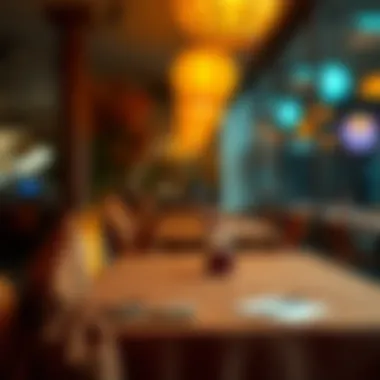

Brick tablecloths also encourage playful experimentation with accessories, be it through bags, shoes, or jewelry. This interactivity enriches casual attire significantly. Accessories often draw on the same color palette, enhancing the overall look while providing room for personal expression.
Brick Tablecloths in High Fashion
The introduction of brick tablecloths into high fashion pushes the envelope of traditional design. Designers increasingly recognize their potential to make bold statements while connecting with rich cultural narratives.
- Runway Influence: Major fashion weeks have seen the integration of brick motifs in various collections. Designers like Thakoon Panichgul have implemented brick patterns in haute couture, showcasing how traditional textures can be elevated to luxury status. Patterns not only evoke nostalgia but also challenge contemporary notions of haute couture, blurring the lines between casual and formal.
- Inspiring Creativity: Many leading fashion houses utilize brick-inspired textiles to provoke thought and dialogue surrounding heritage and identity. The juxtaposition of a classic brick design with avant-garde cuts illustrates how heritage can inform modern fashion, establishing a narrative that resonates with consumers on multiple levels.
- Global Context: The use of brick patterns can symbolize various cultural significances; in some cultures, they may represent community and stability. Thus, incorporating these motifs into high fashion not only elevates the aesthetic value but also ties consumer choices to broader cultural discussions.
The allure of brick tablecloths in high fashion lies in their ability to merge tradition with innovation, creating a fresh perspective in the modern fashion industry. High-profile collaborations and exclusive items featuring these classic patterns continue to emerge, signaling a promising future where brick motifs become central to high fashion statements.
"Through the lens of high fashion, brick patterns transform from mundane to magnificent, challenging our perceptions and expectations."
In summary, the role of brick tablecloths in contemporary fashion is multifaceted. They harmonize with casual wear while simultaneously making bold statements in high fashion, bridging the gap between everyday elegance and runway hype. As style preferences continue to evolve, these fabrics stand ready to adapt, offering insights and inspiration across spheres of fashion.
Styling Tips and Practical Applications
Understanding how to effectively style and utilize brick tablecloths is essential, not only for aesthetic value but also for practicality in various contexts. This section aims to explore the myriad ways these fabrics can be integrated into everyday life and special occasions. The versatility of brick patterns speaks volumes about one’s creativity and personal style—a must for any fashion enthusiast or industry professional. Whether you are aiming for that laid-back vibe or looking to impress at a gathering, these underpinnings can enhance your wardrobe.
Casual Outfits with Brick Motifs
Incorporating brick motifs into casual outfits offers a refreshing take on day-to-day wear. The rich pattern can serve as a statement piece, instantly elevating a simple ensemble into something striking. When selecting casual clothing, consider pairing a brick-patterned tablecloth-inspired button-up shirt with basic denim jeans. This combo not only adds depth to your outfit but also provides texture that draws the eye.
- Layering Ideas: A solid-colored jacket or cardigan can complement the brick motif without overwhelming it.
- Footwear Choices: Sneakers or loafers in neutral colors will ground the outfit, making it feel more approachable.
- Accessorizing: Minimalist jewelry can be a great addition, allowing the brick pattern to take center stage.
Incorporating into Special Occasions and Events
Brick tablecloths can transition seamlessly from casual to formal contexts, making them an excellent choice for a variety of events. The unique patterns lend a sense of warmth and character to gatherings like brunches, weddings, or even corporate functions. Here’s how to make them work:
- Dinner Parties: Use a brick-patterned tablecloth as a surfacing for the dining table. Pair it with elegant dinnerware to create a contrast that is visually appealing.
- Wedding Decor: For rustic-themed weddings, brick motifs can harmonize with natural elements like wood and foliage. Consider using these fabrics for table runners or accent pieces.
- Festive Occasions: During holidays, ingeniously draping a brick-inspired tablecloth around a buffet table can add an understated charm.
"Designing your environment with thoughtful elements like brick motifs not only enhances the ambience but also reflects your personal touch."
A big takeaway is the importance of color coordination. While brick shades can be robust, pairing them with softer hues can balance out the overall look. Therefore, when planning outfits or decor, consider incorporating elements that will harmonize with the unique characteristics of brick tablecloths, ensuring a cohesive aesthetic.
By understanding these styling tips and applications, one can appreciate how brick tablecloths contribute to both casual and refined wardrobes, proving their worth in the realm of contemporary fashion. Embracing these textiles in daily or celebratory contexts amplifies not just your wardrobe but the very experience of fashion itself.
For further insights on fashion trends and design ideas, resources such as Wikipedia Fashion or Britannica on Textiles may provide additional context.
Cultural Implications of Brick Tablecloths
The cultural significance of brick tablecloths goes beyond mere aesthetics; it encompasses deep-rooted traditions, community identifications, and the emotional connection people have with textiles. In contemporary fashion, brick tablecloths are not just used for their visual appeal but also convey stories about heritage and identity. As we unravel the layers of meaning behind these fabrics, we can better appreciate their role in today's cultural landscape.
Symbolism in Different Cultures
Throughout various cultures, tablecloths, particularly those echoing brick patterns, tend to symbolize resilience and stability. For instance, in certain rural communities where brick buildings dominate, the brick pattern can evoke feelings of home and familiarity. In this straightforward manner, these textiles reinforce the notion of belonging.
- Mediterranean Heritage: In countries like Italy and Greece, traditional tavernas often sport tablecloths reminiscent of brick designs, tying to the cultural significance of stone in their architecture. The use of these textiles fosters a communal dining experience, enhancing the feeling of gathering around a shared table.
- American Folk Art: Conversely, in American culture, brick motifs in textiles often reflect a connection to heritage craftsmanship. The pattern might recall the sturdy designs of early American homes, where materials were repurposed from local resources. Here, the tablecloth acts as a bridge between past and present, enriching social occasions with history.
"Tablecloths are more than a kitchen accessory; they are a canvas of stories, told through patterns and styles that resonate across generations."
Evolving Trends Across the Globe
The evolution of brick tablecloths in fashion illustrates a broader change in societal values and preferences. As different regions embrace change, they inspire an array of trends reflecting modern ideals while respecting tradition.
- Minimalism: In urban settings, there's a shift towards minimalist design, moving away from overly ornate tablecloths. Brick patterns are being simplified to create clean, modest looks. This change reflects a growing appreciation for functionality, aligning with contemporary lifestyle choices.
- Sustainable Fashion: There is also a notable trend towards eco-friendly materials. Brands focusing on sustainability are exploring how brick-patterned tablecloths can be made from organic or recycled fibers, appealing to the savvy consumer who values both aesthetics and environmental responsibility.
- Cross-Cultural Influences: Furthermore, globalization allows for cross-cultural exchange in fashion. Fabrics once recognized only in local regions are being adopted by international designers, leading to the emergence of hybrid styles that marry various cultural aesthetics. A striking example would be how brick motifs are incorporated into streetwear designs, balancing tradition with avant-garde.
Technical Aspects of Fabric Care
Fabric care is an essential topic when discussing brick tablecloths, and it sets the foundation for prolonging their lifespan and sustaining their aesthetic appeal. Understanding how to properly care for these fabrics is vital, as it impacts not only their durability but also their performance in various environments. As fashion lovers and industry professionals, a wealth of knowledge about surrounding fabric care can significantly enhance the overall experience of using brick tablecloths in your styling endeavors.
Cleaning and Maintenance
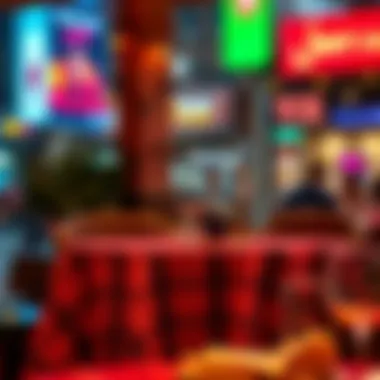

Keeping brick tablecloths in top shape necessitates an organized cleaning routine. The first step involves recognizing the type of fabric blend used in the creation of the tablecloth and its unique care requirements. Most brick tablecloths, whether made of cotton, polyester, or a combination, have specific washing instructions.
Here's a quick rundown on maintaining these tablecloths:
- Read Care Labels: Always check the textile care label for specific instructions. Some fabrics may be machine washable, while others require hand washing to avoid damage.
- Regular Dusting: A soft brush or lint roller can work wonders. Gentle wiping removes crumbs and prevents build-up.
- Stain Removal: Act quickly! For minor spots, use cold water and a mild detergent, applying it directly to the stain. For tougher stains, a gentle fabric-safe solution may be necessary.
- Air Dry: Whenever possible, air drying helps preserve fabric integrity. Tumble drying can lead to shrinkage, especially in cotton blends.
"A stitch in time saves nine." This adage rings true when it comes to fabric care. Regular maintenance can prevent larger issues down the road.
Durability and Longevity
Understanding the durability and longevity of brick tablecloths is crucial for both aesthetic and practical choices in your wardrobe or decor. High-quality fabric can withstand repeated use without losing its charm. Several factors contribute to the endurance of these textiles:
- Fabric Choice: Different fabric types vary significantly in terms of durability. For instance, a polyester-cotton blend often holds up well against wear and tear compared to a single layer of cotton.
- Weave Structure: The weave pattern can affect how the fabric performs over time. A tight weave not only looks refined but is also more resistant to fraying and wear.
- Environmental Exposure: Exposure to elements like sunlight or moisture can render even the toughest tablecloths vulnerable over time. Storing them in a cool, dry place can extend their life.
- Usage Frequency: The more frequently a tablecloth is washed, the more likely it is to wear down. Being mindful of when to use them can make a significant difference in their lifespan.
In summary, proper cleaning and an understanding of durability factors play a pivotal role in ensuring that brick tablecloths remain a stylish and functional choice in fashion. Leveraging these insights will not only enhance your experience but will also reflect a commitment to sustainability and quality in all aspects of your styling choices.
Comparative Analysis with Other Tablecloths
The exploration of brick tablecloths against the backdrop of other styles is crucial in understanding their unique place in contemporary fashion. This comparative analysis will shed light on the specific characteristics that set brick patterns apart, as well as their functional benefits in various settings. Recognizing how brick tablecloths stand in contrast to traditional designs is not only interesting but also pivotal for fashion enthusiasts and professionals alike to appreciate their evolving significance.
Brick vs. Traditional Patterns
When placed alongside traditional tablecloth patterns, brick designs offer a fresh narrative. Traditional patterns typically include floral motifs, stripes, or polka dots, embodying a sense of familiarity and comfort. However, brick patterns introduce a rugged charm, characterized by their distinct geometric shapes and structured lines.
Key Differences:
- Visual Impact: Unlike intricate floral prints, brick patterns tend to have a striking simplicity that can make a bold statement.
- Versatility: The clean lines of a brick design allow it to pair with both modern and rustic decor, where traditional patterns might clash.
- Texture: Fabrics bearing brick motifs often reflect a textural richness that resonates differently as compared to smooth, glossy finishes seen in many classic styles.
Each pattern brings its own flair to the table, yet brick tablecloths create a unique opportunity for stylistic flexibility that many traditional designs do not accommodate. They serve to enhance not just the aesthetic appeal but also the thematic expressions of the spaces they inhabit.
Innovative Uses in Different Settings
Thinking outside the box, brick tablecloths are finding innovative applications across various contexts. As we pivot from the classic dining table, brick designs are becoming prominent in unconventional environments, signaling a shift towards more creative uses.
Noteworthy Applications:
- Event Decor: From weddings to corporate gatherings, brick patterns can add an edgy yet elegant touch. Their neutral tones cater well to diverse themes, while the unique pattern enriches event narratives.
- Home Design: Brick tablecloths at casual gatherings or family dinners lay a foundation for an effortless yet refined setting, contrasting with standard table settings that often feel too formal or stale.
- Fashion Statements: Designers are using fabric with brick patterns in clothing, repurposing what was once solely for dining into a fashion-forward statement piece.
Brick patterns symbolize strength and reliability, which resonates well in both personal and professional settings.
The versatility of brick tablecloths and their innovative usages demonstrate a departure from traditional norms and usher in a period of creativity and self-expression in fashion and design contexts. This adaptability not only keeps the designs relevant but also allows them to be enjoyed across a spectrum of everyday and high-fashion situations, asserting their evolving role in contemporary aesthetics.
Finale and Future Trends
In today's fast-paced fashion landscape, understanding the influences and implications of various textiles is paramount. This article delves into the significance of brick tablecloths, highlighting how they not only personalize styles but also serve as reflections of historical and cultural contexts. As we've seen, these fabrics are not just utilitarian items; they embody narratives of innovation, aesthetics, and social trends from their past to their evolving presence in the fashion industry.
Evolving Aesthetics in Fashion
Brick tablecloths bring a unique twist to modern aesthetics. Their patterns and textures resonate with various styles, from rustic cottage to contemporary chic. Designers are now embracing the earthiness of brick motifs, integrating them into collections that challenge traditional notions of formality.
For instance, the transition from classic plaid to brick-like structures is evident in urban streetwear. Through layering and mixing, fashion enthusiasts create visually captivating ensembles that speak to their individuality. Additionally, consumers increasingly favor pieces that highlight sustainability, making brick patterns not merely a trend but a lifelong strategy in design.
This shift in fashion perspective pushes creators to rethink how fabric can be utilized—whether in high-end couture or accessible those cooler days when comfort rules over style. The plugin of bricks into contemporary wear could be seen in a vibrant day dress paired with a stylish denim jacket or a sleek business outfit accented with a distinctive brick-patterned accessory. As people's tastes broaden, there’s an undeniable curiosity about how hues and textures can drastically shift the meaning behind simple clothing choices.
Impacts of Technology on Fabric Development
In the realm of fashion, technology is proving to be a double-edged sword; it sparks creativity while also raising questions about sustainability. Innovations in fabric development have allowed manufacturers to replicate brick textures with less environmental impact.
New methods include digital printing techniques that produce vibrant patterns without the excessive waste associated with traditional textile manufacturing. For example, 3D knitting technologies are emerging, allowing designers to create entirely new structures that mimic brick tablecloth aesthetics while ensuring durability and flexibility.
Moreover, smart textiles are generating buzz by offering features such as weather resistance or temperature regulation, catering to the modern consumer's need for both style and practicality. This leap into the future affects not only how brick patterns adorn our wardrobes but also speaks volumes about how conscious fashion is shifting into a dual lane of excellence and responsibility, pushing brands to remain relevant while being altruistic.
The evolution of brick tablecloths in contemporary fashion encapsulates more than just a textile choice; it represents a larger narrative of evolving societal values and aesthetics. As the dialogue around sustainability and creativity continues to unfold, the influence of brick patterns will likely endure—adapting and transforming as trends come and go, just like the bricks themselves laid out in a timeless structure.
"Fashion is a language that creates itself in clothes to interpret reality." – Karl Lagerfeld
By exploring the essence of brick tablecloths, we not only appreciate their aesthetic qualities but also recognize how they encapsulate the zeitgeist of both calendar and culture.



